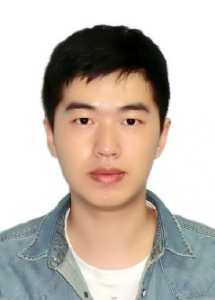Date&Time: 14:00-17:30, December 26, 2021 Location: Duke Ballroom
Intro: There are a lot of challenging problems in the field of image and graphics that researchers are keep trying to solve. In this forum, winners of 2020 Science and Technology Award of China Society of Image and Graphics are invited to present their award-winning projects. These projects are outstanding representatives of research achievements in the field of image and graphics in China. The forum provides a precious chance to understand these breakthroughs in key theories and technologies in the field of image and graphics, including object cognition and learning in complex environment, target re-identification across time and space, visual media understanding via local correlation analysis, cross-domain face image reconstruction and credible identity authentication, robust image analysis via data quality assessment, multi light source fusion model for 3D print et. al. The speakers will share their experiences and insights in achieving these research results, as well as their latest progress.
Organizer: Yuxin Peng (Peking University) and Jiansheng Chen (University of Science and Technology Beijing)
Agenda:
14:00-14:30
From Person Re-identification to Behaviour Analysis
Wei-Shi Zheng
14:30-15:00
Object Cognition and Learning in complex environment
Huimin Ma
15:00-15:30
Local Correlated Analysis and Representation of Visual Media
Xinhang Song
15:30-16:00
Cross-domain Image Reconstruction and Credible Identity Authentication
Nannan Wang
16:00-16:30
From Perceptual Quality to Cognitive Quality – Robust Image Analysis via Data Quality Assessment
Qingbo Wu
16:30-17:00
Preliminary Exploration on Intelligent 3D Printing
Lifang Wu
17:00-17:30
Panel
Title: From Person Re-identification to Behaviour Analysis
Abs: The person re-identification is known to track persons across non-overlapping camera views and various methods have been developed recently. While behavious analysis is to understand a person’s activity, it seems that there is rare connection between these two tasks. This talk will try to show why person re-identification is useful for behavious analysis along with presenting our recent research on these two tasks.

Wei-Shi Zheng
Bio: Wei-Shi Zheng is now a full Professor with Sun Yat-sen University. Dr. Zheng received his Ph.D. degree in Applied Mathematics from Sun Yat-sen University in 2008. His research interests include person/object association and activity understanding in visual surveillance, and the related large scale machine learning algorithm. He has ever joined Microsoft Research Asia Young Faculty Visiting Programme. He has ever served as area chairs of CVPR, ICCV, BMVC and IJCAI. He is an IEEE MSA TC member. He is an associate editor of the Pattern Recognition Journal. He is a recipient of the Excellent Young Scientists Fund of the National Natural Science Foundation of China, and a recipient of the Royal Society- Newton Advanced Fellowship of the United Kingdom.
Title: Object Cognition and Learning in complex environment
Abstract: Computer vision is closely related to brain science and cognitive science, but there is an insurmountable gap between human visual perception mode and computational visual computing methods, especially on key issues such as quantitative representation of human vision, computing architecture of cognitive learning. This report introduces our researches on complex environment understanding, three-dimensional target detection and driving behavior prediction with prototype memory and Gestalt cognition inspired by brain and cognition. Focusing on intelligent driving tasks, the report introduces three aspects: (1) Weakly-supervised and few-shot learning based semantic segmentation; (2) Thinking in 3D driving scene 3D target detection; (3) Predictive Bi LSTM CRF cognitive prediction of driving behavior.

Huimin Ma
Bio: Professor Huimin Ma is the dean of the Department of Internet of Things and Electronic Engineering at University of Science and Technology Beijing. She was the director of 3D Image Lab in the Department of Electronic Engineering of Tsinghua University and the vice president of the Institute of artificial intelligence at University of science and technology Beijing. She is now the vice president and Secretary General of China Society of Image Graphics. She engaged in the cross research of computer vision and cognitive psychology, and explored the key technologies of visual perception, cognition and decision-making of unmanned systems in complex environment. She has been in charge of more than 30 projects such as National Key Basic Research Program of China, National Special Projects and National Natural Science Foundation in the field of Cognitive learning, modeling and simulation in complex scenes. Her researches on the human cognition model and object detection method in complex environment won the first place in the evaluation of the largest automatic driving data set KITTI, the first prize of Wu Wen-jun artificial intelligence science and technology innovation, first prize of technical invention of China Society of image graphic, the second prize of the technological invention award of the Ministry of education. As the corresponding author, she has published more than 100 papers including TPAMI, TIP, TITS, PR, CVPR, NIPS, ICCV, etc. Email: mhmpub@ustb.edu.cn, Web homepage: http://3dimagelab.cn
Title: Local Correlated Analysis and Representation of Visual Media
Abs: Human beings have the inherent ability of local correlation and global aggregation. Visual media such as images/videos have the characteristics of rich content with complex contexts. Usually, local regions are the basic components of images, which contain rich information and various types of relationships. How to model the relationships between local regions and establish the multi-dimensional fusion from local to global is a cutting-edge problem in visual media analysis. In this work, we investigate the local correlation and global aggregation in the following aspects, including the contextual modeling between semantic representations of local regions, and multi-scale aggregation from local to global, which can alleviate the weak correlation problem for visual media analysis. In addition, we also investigate the local correlation research in more challenging tasks, i.e., dynamic visual media analysis on Embodied AI. In particular, multi-scale spatial and contextual modeling framework is proposed for visual navigation task, which can improve both the successful rate and efficiency.

Xinhang Song
Bio: Xinhang Song, received Ph.D. from the Institute of computing technology (ICT), Chinese Academy of Sciences (CAS) in 2017. He is now an associate professor and master supervisor in ICT, CAS. The main research fields include scene recognition, segmentation, object detection and visual navigation. He has published more than 20 papers on ACM\IEEE Trans. or CCF-A conferences, such as CVPR, ICCV, NeurIPS, AAAI, IJCAI, ACM Multimedia, TIP. He won the first place of visual navigation competition in CVPR 2021 Embedded AI, the first place of ACM MM2016 Yahoo-Flickr Grand Challenge on Tag and Caption Prediction, and the first place of ImageCLEF 2013 Robot Vision competition. He won the Special Prize of the President Scholarship of the Chinese Academy of Sciences, the Outstanding Doctoral Dissertation Award of the Chinese Society of Image and Graphics (CSIG), and was supported by ” National Postdoctoral Program for Innovative Talents “.
Title:Cross-domain Image Reconstruction and Credible Identity Authentication
Abstract: As an important task for “Safe City” construction, city-level video surveillance has evolved from the first generation of “visible” and the second generation of “readable” to the third stage of “intelligible”. Due to the wide spatial distribution of city level cameras and large differences in their types and parameters, it is a major challenge to realize the “intelligible” city level video surveillance system. This lecture mainly introduces the recent progress on cross-domain image reconstruction and credible identity authentication technology, including (1) Behavior analysis (abnormal behavior detection, behavior location and recognition): complete semantic information extraction through multi-scale boundary sensitive network for temporal action localization; the differentiation of reconstruction quality of normal and abnormal data through the detection of temporal-spatial fusion features; (2) Cross-modality person re-identification: improving the feature modality invariance by measuring and constraining the modality differences between cross-modality person high-dimensional features; (3) Video object clarity (underlying vision): Improving the representation ability of inter-frame temporal dependence by joint priori information and motion invariance; (4) Cross-domain image synthesis (heterogeneous image generation and image stylization): Transforming the images from different modalities into unified modality to achieve information completion. (5) Cross-domain image recognition (heterogeneous face image recognition): Improving the interpretability and accuracy of cross-domain image synthesis and recognition through representation disentanglement learning. This research can provide a systematic solution for the intelligent analysis of network video streaming; (6) Credible identity authentication: here “credible” mainly refers to reliability and security. The algorithm is supposed to not only defend against external attacks (adversarial learning), but also protect private information.

Nannan Wang
Bio: Nannan Wang, Huashan Scholar distinguished professor and doctoral supervisor at Xidian University, is currently the director of Intelligent information processing center in State Key Laboratory of Integrated Services Networks. In recent years, he has been engaged in the research of computer vision and statistical machine learning. His research mainly involves cross-domain image reconstruction and credible identity authentication, including sketch-photo synthesis and recognition, image/video super-resolution reconstruction, image restoration, behavior analysis and recognition, person re-identification, etc. He has published over 150 papers in top international journals and conferences such as IEEE TPAMI, IJCV, CVPR, ICCV, ECCV, NeurIPS, ICML, etc. He has received Outstanding Youth Foundation from National Natural Science Foundation of China. He has been selected as Young Elite Scientists Sponsorship Program by China Association of Science and Technology (CAST). He has been awarded the first prize for Ministry of Education Natural Science Award, the first prize for Shaanxi Province Science and Technology Award, the second prize of China Society of Image and Graphics (CSIG) Natural Science Award. He is the recipient of the Chinese Association for Artificial Intelligence (CAAI) Outstanding Doctorate Dissertations Award and Shaanxi Province Outstanding Doctorate Dissertations Award.
Title: From Perceptual Quality to Cognitive Quality – Robust Image Analysis via Data Quality Assessment
Abstract: Data quality plays a critical role for robust image analysis. Unfortunately, due to various unforeseen noise and inevitable human error, our intelligent vision systems always suffer great challenge from poor data quality. On the one hand, the image data captured from the sensors may suffer different kinds of distortions, which causes domain shift and degrades the performance of image analysis model trained with pristine images. On the other hand, the manually annotated label data may also suffer incorrect labels, which misleads the supervised learning process. In this talk, I will introduce our recent efforts in conducting robust image analysis via data quality assessment. First, we present a relevance-aware incremental learning model to adapt to increasingly diverse image quality assessment tasks, which warns the intelligent vision system under image data distortion. Second, we introduce a graph reasoning based image quality enhancement method to alleviate the domain shift between the distorted image and the pristine image. Finally, we discuss a task-specific switchable loss for learning robust instance segmentation model from noisy label data.

Qingbo Wu
Bio: Qingbo Wu is an Associate Professor at the School of Information and Communication Engineering, University of Electronic Science and Technology of China (UESTC). He received the Ph.D. degree in Signal and Information Processing from UESTC in 2015. Before joining the UESTC, he was a research assistant in the Chinese University of Hong Kong, and visiting scholar in the University of Waterloo. He was selected to the “Spark Program of Fundamental Research”, and “Young Scholar of Distinction” of UESTC in 2018. His research interests include the image quality assessment theory, image enhancement and restoration model, perception-driven deep neural network, etc. He has authored more than 100 scientific publications, including various IEEE Transactions and journals, and conference papers of CVPR, ICCV, ECCV, ACM MM and so on. He received the Top 10% paper awards at the IEEE ICIP 2015 and VCIP 2016.
Title: Preliminary Exploration on Intelligent 3D Printing
Abs: The core idea of intelligent manufacturing is to use the new generation of information processing technology to lead the reform and industrial upgrading in the manufacturing field. As an interdisciplinary subject of information, materials and machinery, 3D printing is a natural intelligent manufacturing practice platform.how to organically integrate intelligent information processing technology into 3D printing technology and solve the challenging problems is a problem that needs in-depth thinking. This report will take our work obtained the second prize of technical invention of CSIG – large-size DLP surface exposure 3D printing technology, as examples to introduce our exploration in Intelligent Manufacturing.

Lifang Wu
Bio: Lifang Wu, professor and doctoral supervisor with Beijing University of technology. She received Bachelor Degree, master Degree and doctoral degrees from Beijing University of technology in 1991, 1994, and 2003 respectively. She was a visiting scholar at the University of Birmingham from September to December 2005 and a visiting scholar at the University of New York at buffalo from October 2009 to May 2010. Her main research interests include image and video content analysis, intelligent 3D printing, face liveness detection etc. In recent years, she has undertaken more than 20 projects, and published more than 100 papers in PR, IEEE TCSVT, Neurocomputing, PRL, etc., and obtained more than 40 authorized patents. She won the third prize of Beijing Science and technology progress award, the third prize of electronic information technology of CIE, the second prize of sports science and technology award of China sports society, and the second prize of technical invention of CSIG. In 2020, She won the title of excellent scientific and technological worker of CIE, and intelligent 3D printing technology won the Best University Exhibition Award of the NCIG 20. She is now one of directors of CSIG, Executive director of BSIG, Outstanding member of China Computer Society (CCF), standing member and Deputy Secretary General of CCF computer vision committee, and standing member of CSIG big vision data committee. Editorial board member of signal processing, information volume of Chinese scientific papers, Chinese Journal of image and graphics, member of icme2017, icpr2018 and other international conference procedure committees, and participated in organizing cccv2017, prcv2019, ncig2020, chinamm2020, prcv2021, etc.